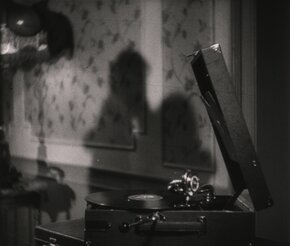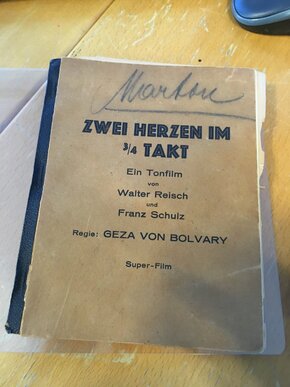- Scientific Team
- ZWF - Mission Statement
- Artistic Research at the MUK
- Annual theme
- ZWF events
- Current news
- Research projects
- Scientific Research Projects
- Overview Scientific Research Projects
- Beethoven
- The Austro-German Melodrama and its Film Music
- The Impact of Sound on the Screenplay, 1927—1934
- Deutschsprachige und anglophone Formenlehre der Nachkriegszeit
- The woman of my dreams
- Die Illusion der Freiheit
- ELEMU and the art of interaction
- European Landscapes
- Experiment Notation
- Film score for conveying ideology
- Gustav Mahlers Compositional Logic
- MUK History - Contemporary History
- Hellerau-Laxenburg
- Interdisziplinäre Mittelalterstudien
- It’s a Match!
- Cultural participation
- LSBTIQ* Bewegungen und Demokratie: Geschichte, Gegenwart und Zukunft
- MUK meets IFK
- Salon Différance
- Research on Dance Archives
- Theatre & Consciousness
- Urban Music Studies
- Hidden Paintings
- From Text to Performance: Literary Em-bodiment
- Wachau Myth
- Artistic Research Projects
- Overview Artistic Research Projects
- Archive of search
- Cabaret of Old News
- Composer/Performer Relations
- DANCR - an AI tool for dance research
- The vanishing of the archive
- The Art of Inclusion
- Dynamics of condensed systems
- Elementary Music Theatre
- Experiment Empathy in collaborative Improvisation
- Fiction and Research
- Franz Schubert — Der Akt des Dichtens in seiner musikalischen Darstellung
- Gender and violence
- Inter-university research network Elfriede Jelinek
- Art and politics
- The correlation between the gaze, the voice,...
- Notation and performance
- Suite Mixtur
- Transforming Instrumental Gestures
- Word.Music.Theatre
- Arts-based research (EEK)
- Overview EEK
- Artist in Residence Programm
- Artistic Research
- Moving images of Jewish culture / film and exile
- Carte blanche
- Didactics of Contempary Music and Composing
- Entente Musicale
- IGP and Community Music
- Jazz und seine Einflüsse aus anderen Musiktraditionen
- Method of Vienna
- Thinking music
- Operetta
- Poème électronique
- City and sound
- Viennese Original Sources
- vienna.composers@MUK
- Zeitgenössische klassische Musik & Jazz
- Scientific Research Projects
- Gender & Diversity
- Research Service
- Competence Centre Film | Film Music
- Joint Research Network E. Jelinek
- Teaching
The Impact of Sound on the Screenplay, 1927—1934
Projektleitung: Claus Tieber
Mit der Einführung des Tonfilms haben sich auch Format und Gestaltung des Drehbuchs geändert. Aus einem oftmals in Prosa gehaltenen Text (das so genannte continuity script) wurde jenes Drehbuchformat, das wir heute kennen und das in Hollywood als master scene script bezeichnet wurde.
Diese grundlegende Veränderung des Stummfilmdrehbuchs vollzog sich in relativ kurzer Zeit und wurde bislang nicht im Detail untersucht. Mein Projekt stellt sich die Aufgabe, den Einfluss des Tons und damit des Dialogs, der Geräusche und der Musik auf das Drehbuch zu erforschen. Diese akustischen Elemente des Films, die der Tonfilm mit sich brachte, forderten nicht nur ein neues Format, sondern brachten auch eine stärkere Rhythmisierung von Teilen des Drehbuchs mit sich. Das Drehbuch als Grundlage für die Produktion eines Films musste wegen der Inklusion akustischer Elemente neue Aufgaben erfüllen, für die das alte Format keine Lösungen bot. Dabei entstanden zunächst unterschiedliche Formen und Formate, die sich an andere Kunstformen wie etwa dem Theater orientierten. Am vorläufigen Ende dieser Entwicklung stehen im Detail unterschiedliche Formate, abhängig von der Produktionsweise des jeweiligen Landes. Im Projekt wird auf eben jene Unterschiede Wert gelegt und die besagte Entwicklung an Beispielen von Drehbüchern der frühen Tonfilmzeit aus Amerika, Frankreich, Deutschland und Österreich untersucht.
Neben der Formatfrage und all den damit verbundenen Themen, steht insbesondere der Rhythmus eines Drehbuchs im Mittelpunkt des Projekts. Mit dem Tonfilm wird Rhythmus auf allen Ebenen (Dialog, Musik, Schnitt) zu einem wichtigen Element. Dies bildet sich auch im Drehbuch ab, auch wenn dieses keinen unmittelbaren Einfluss auf den Rhythmus etwa des Schnitts hat. Mit dem Ton bekommt das Drehbuch jedoch seine eigenen Rhythmen, vom Dialog bis zur Erzählgeschwindigkeit. Die Sichtbarmachung, Kontextualisierung und Diskussion von Formen des Rhythmus im Drehbuch des frühen Tonfilms nehmen im Projekt breiten Raum ein und sollen damit auch das Bewusstsein für eine zentrale ästhetische Kategorie schärfen.
Chronik:
Erste Ergebnisse publiziert
In einer Sondernummer der Zeitschrift Illuminace: The Journal of Film Theory, History and Aesthethics (peer reviewed, open access) wurde soeben der Artikel „Fascinating Rhythm: Screenwriting Sound Symphonies for American and European Films of the 1930s“ von Projektleiter Claus Tieber veröffentlicht.
Behind the Scenes: Produktionsperspektiven auf Sound und Musik
Das Forschungsprojekt präsentiert sich im Rahmen der Tagung „Behind the Scenes: Produktionsperspektiven auf Sound und Musik“ vom 27-28.6. an der Universität. Die Konferenz wird gemeinsam von der Kieler Gesellschaft für Filmmusikforschung und dem Netzwerk Drehbuchforschung organisiert. Das vollständige Programm findet sich hier.
Rethinking Rhythm in Film: Projekt präsentiert auf Tagung in Cambridge
Erste Ergebnisse des Forschungsprojekts werden am Donnerstag, den 22. Mai auf der Tagung „Rethinking Rhythm in Film“ vorgestellt. Das volle Programm plus Link zur Online-Teilnahme findet sich hier:
Panel bei SCMS-Tagung in Chicago
Das Projekt wird am 4. April 2025 bei der Jahrestagung der Society of Cinema and Media Studies in Chicago präsentiert. Projektleiter Claus Tieber hat ein Panel zum Thema „The Impact of Technological Transitions on the Screenplay” zusammengestellt und wird dort über Rhythmus in Drehbüchern des frühen Tonfilms sprechen.
Präsentation bei „Film Europe“ Konferenz
Projektleiter Claus Tieber wird bei der internationalen Tagung „Film Europe: European Cinema between Imagination and Reality in the Fascist Era (1933 – 1945) vom 14.- 16.10.2024 in Rom referieren. Das Thema seines Vortrags lautet: „In Tune with Fascism: Political Meanings of Music in Austrian Cinema 1933−38.“
"The Palgrave Handbook of Screenwriting" mit Book Award des SRN ausgezeichnet
Das Palgrave Handbook of Screenwriting Studies, herausgegeben von Rosamund Davies, Paolo Russo und Projektleiter Claus Tieber, wurde mit dem Book Award des Screenwriting Reseach Networks (SRN) ausgezeichnet.
Präsentation bei der Jahrestagung des Screenwriting Research Networks an der Universität Olomouc
Projektleiter Claus Tieber wird im Herbst das am MUK durchgeführte FWF-Projekt The Impact of Sound im Rahmen der Jahrestagung des Screenwriting Research Networks (SRN) an der Universität Olomouc (Tschechische Republik) präsentieren.
Vortrag Claus Tieber:
“Fascinating Rhythm: Rhythm in screenplays of the early sound era”
SRN Conference Olomouc
11.-15.09.2024
Project leader: Claus Tieber
With the transition to sound the form and contents of the screenplay changed. A text that was written in prose before, (the so-called continuity script) developed into the format we know today, which is commonly referred to as master scene script.
This transformation happened during a relatively short time and has not been examined in detail so far. The objectives of my project are to analyse the impact of sound, music, and speech (dialogue) on the screenplay. These acoustic elements, added to film by the new technology of sound film, also led to a new screenplay format as well as a stronger rhythmisation of it.
The inclusion of acoustic elements in film production brought new problems that the screenplay had to contend with and for which the old format offered no solutions. New forms and formats were created, some of them turning to the legitimate stage as a possible model. At the end of this development stands the screenplay format we know today, with differences according to the different modes of production in different countries. These differences are significant, which is why this project examines them with case studies from the United States, France, Germany and Austria.
Besides (and sometimes related to) the question of the screenplay format, the issue of rhythm in screenplays is at the centre of this project.
Sound film made rhythm a crucial element on all levels (dialogue, editing, music), which can be detected in the screenplay, even if it does not have an explicit effect on the rhythm of the editing. The screenplay gains its own rhythm on different levels from dialogue to the pace of narration. Detecting, contextualising and discussing these forms of rhythm in the screenplays of the early sound era are crucial objectives of this project, aiming to build the case for the importance of this overlooked aesthetic quality of screenplays.
Chronik:
Behind the Scenes: Produktionsperspektiven auf Sound und Musik
Das Forschungsprojekt präsentiert sich im Rahmen der Tagung „Behind the Scenes: Produktionsperspektiven auf Sound und Musik“ vom 27-28.6. an der Universität. Die Konferenz wird gemeinsam von der Kieler Gesellschaft für Filmmusikforschung und dem Netzwerk Drehbuchforschung organisiert. Das vollständige Programm findet sich hier.
Rethinking Rhythm in Film: Projekt präsentiert auf Tagung in Cambridge
Erste Ergebnisse des Forschungsprojekts werden am Donnerstag, den 22. Mai auf der Tagung „Rethinking Rhythm in Film“ vorgestellt. Das volle Programm plus Link zur Online-Teilnahme findet sich hier:
Panel bei SCMS-Tagung in Chicago
Das Projekt wird am 4. April 2025 bei der Jahrestagung der Society of Cinema and Media Studies in Chicago präsentiert. Projektleiter Claus Tieber hat ein Panel zum Thema „The Impact of Technological Transitions on the Screenplay” zusammengestellt und wird dort über Rhythmus in Drehbüchern des frühen Tonfilms sprechen.
Präsentation bei „Film Europe“ Konferenz
Projektleiter Claus Tieber wird bei der internationalen Tagung „Film Europe: European Cinema between Imagination and Reality in the Fascist Era (1933 – 1945) vom 14.- 16.10.2024 in Rom referieren. Das Thema seines Vortrags lautet: „In Tune with Fascism: Political Meanings of Music in Austrian Cinema 1933−38.“
"The Palgrave Handbook of Screenwriting" mit Book Award des SRN ausgezeichnet
Das Palgrave Handbook of Screenwriting Studies, herausgegeben von Rosamund Davies, Paolo Russo und Projektleiter Claus Tieber, wurde mit dem Book Award des Screenwriting Reseach Networks (SRN) ausgezeichnet.
Präsentation bei der Jahrestagung des Screenwriting Research Networks an der Universität Olomouc
Projektleiter Claus Tieber wird im Herbst das am MUK durchgeführte FWF-Projekt The Impact of Sound im Rahmen der Jahrestagung des Screenwriting Research Networks (SRN) an der Universität Olomouc (Tschechische Republik) präsentieren.
Vortrag Claus Tieber:
“Fascinating Rhythm: Rhythm in screenplays of the early sound era”
SRN Conference Olomouc
11.-15.09.2024





